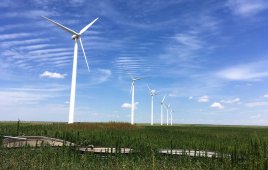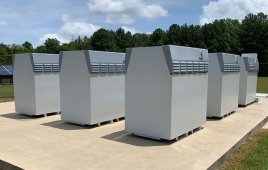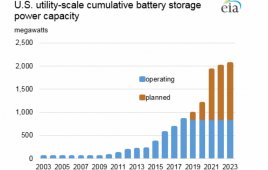 A new white paper from Navigant Research examines five major trends and the related market forces expected to shape the future of the energy storage industry in 2016 and beyond.
A new white paper from Navigant Research examines five major trends and the related market forces expected to shape the future of the energy storage industry in 2016 and beyond.
The global energy storage industry reached significant milestones in 2015, and momentum is expected to continue as rapidly falling technology costs and innovative business models combine with government policies and regulatory reforms to create a dynamic market for energy storage.
As the industry matures, Navigant Research foresees five trends likely to shape the future of energy storage, including one that represents a key business model for distributed energy storage: energy storage-enabled virtual power plants (VPPs) are expected to invade energy markets, serving as highly networked systems and precursors to a fully functional Energy Cloud.
“The energy storage industry began to noticeably scale in 2015,” says Anissa Dehamna, principal research analyst with Navigant Research. “Looking to 2016 and beyond, it is expected that the energy storage industry will resolve persistent issues, such as standardized contracts and modular system design, embrace new business models such as residential storage and virtual power plants, and begin to see pressure and interest from the IT space.”
Navigant Research also believes that the energy storage sector will leverage the lessons learned from distributed solar to quickly standardize how energy storage system components should be built and how they should perform and communicate to each other and the grid.
According to the white paper, this modular evolution will allow project developers and ESS hardware and software suppliers to apply traditional lean manufacturing concepts to rapidly reduce project costs, resulting in more modular ESSs with standardized power and energy performance capabilities and lower costs over the near- to mid-term.
The white paper, Five Trends for Energy Storage in 2016 and Beyond, presents the top five trends for the energy storage industry in 2016 and beyond. This report examines some of the major market issues driving investment in energy storage around the world and how various stakeholders are adapting to the changing market. Each of the topics in this white paper is examined more deeply in research reports and ongoing research from Navigant Research’s Grid-Tied Energy Storage and Advanced Batteries Research Services.
An Executive Summary of the report is available for free download on the Navigant Research website.
Filed Under: Energy storage





Wind and refrigerant for Northern Wind
a 125-kilowatt prototype vessel that uses its novel floating wind turbine design paired with liquid-air energy storage to create a steady source of electricity.
Possible Breakthrough?
Are there not refrigerant gases that can be custom designed to accommodate/ameliorate this fantastic idea? For a fact, in Northern Canada where day/night temperature differentials can actually boost this effect this could replace even Hydro generation?
http://spectrum.ieee.org/energywise/energy/environment/wind-turbines-power-liquid-air-energy-storage